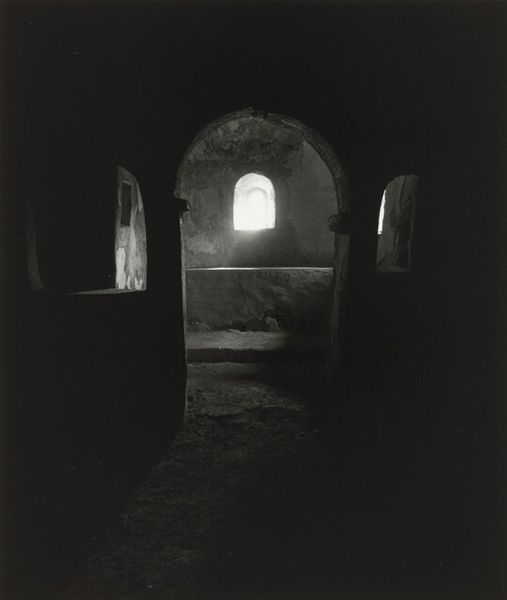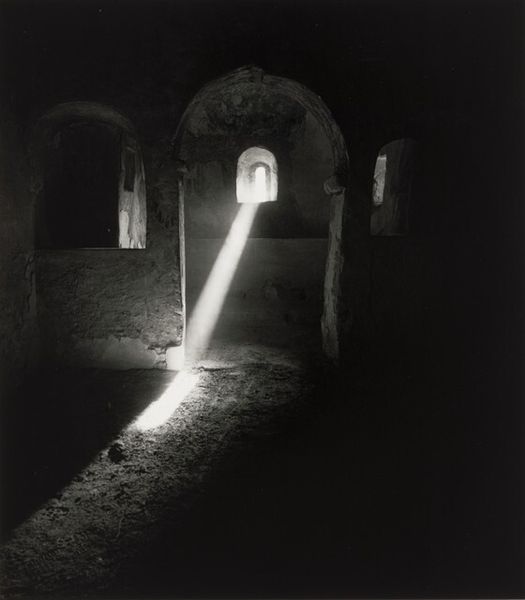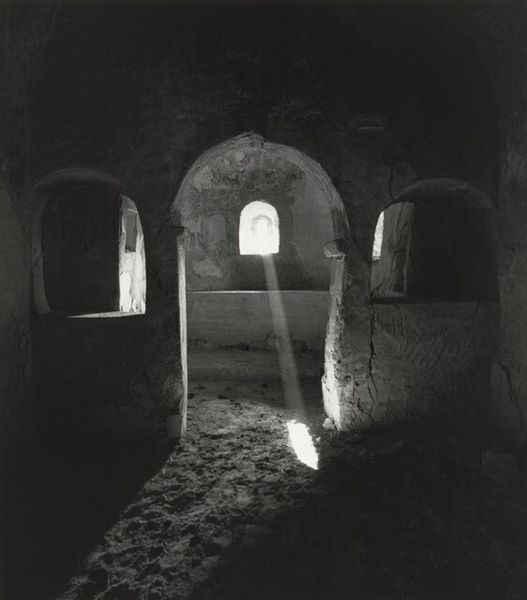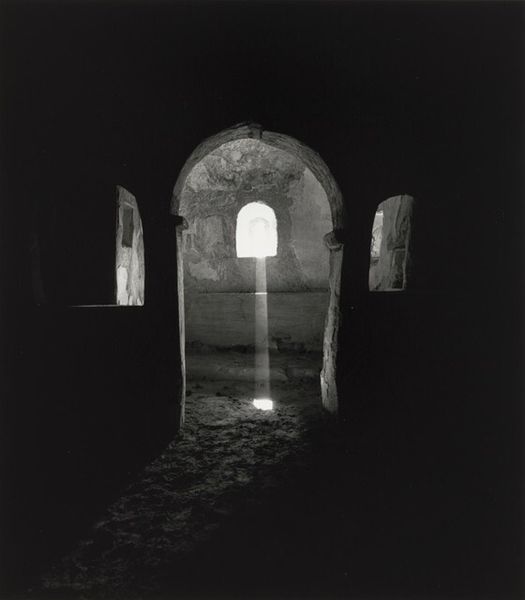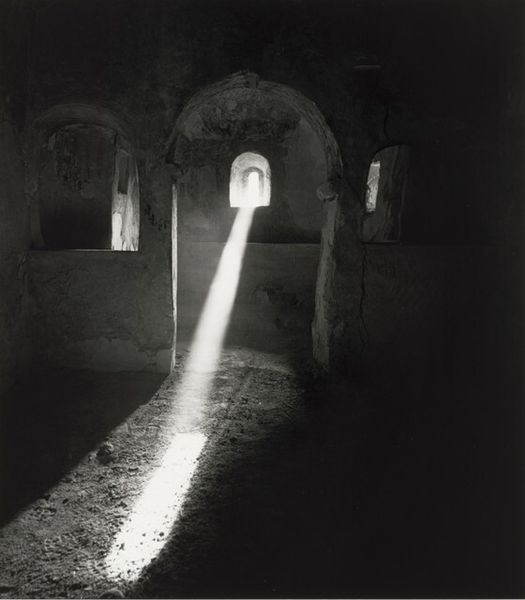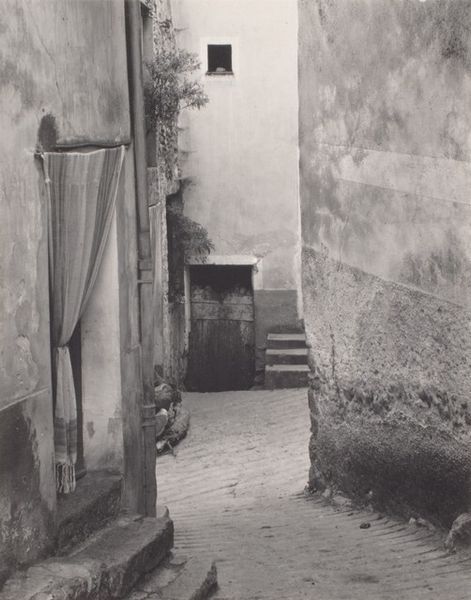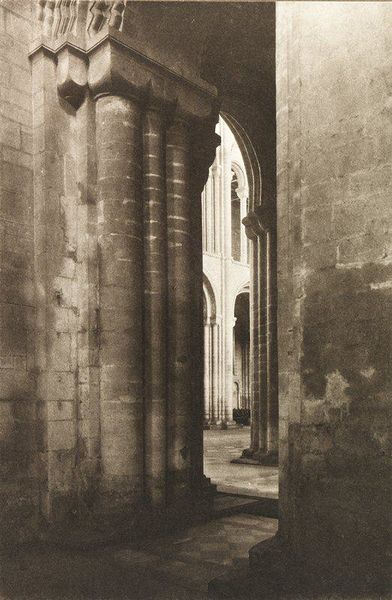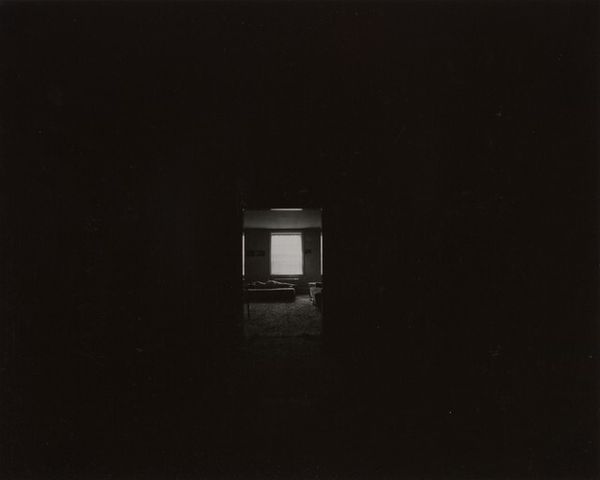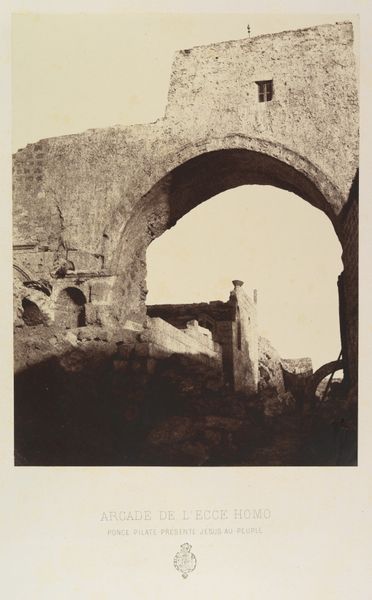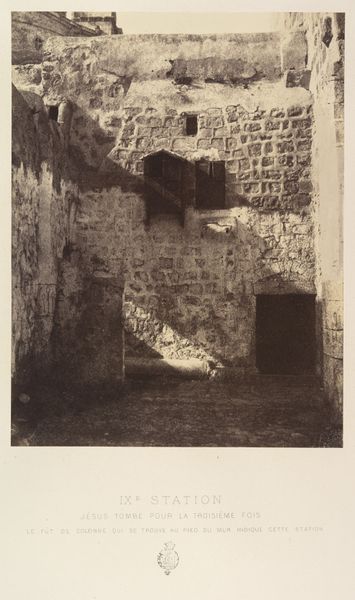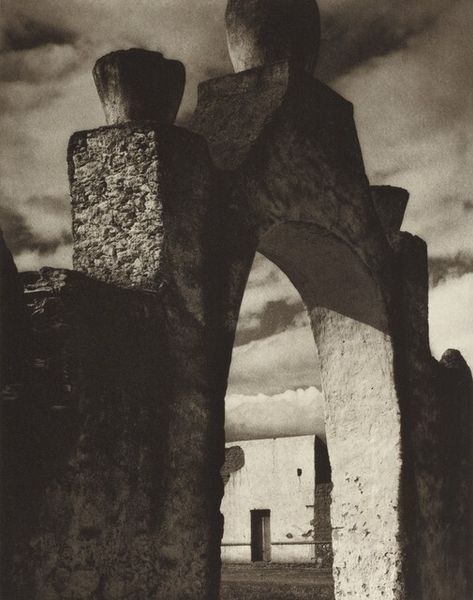
Esteban de Viguera, April 28, 1992, 9:30 - 11:00 a.m. 1992
0:00
0:00
photography, gelatin-silver-print
#
conceptual-art
#
minimalism
#
landscape
#
photography
#
black and white
#
gelatin-silver-print
Dimensions: image: 28.5 × 23.81 cm (11 1/4 × 9 3/8 in.) sheet: 40.64 × 30.48 cm (16 × 12 in.)
Copyright: National Gallery of Art: CC0 1.0
Ursula Schulz-Dornburg made this black and white photograph, Esteban de Viguera, on April 28, 1992. The image depicts the interior of a stone structure illuminated by a single ray of light. The work invites us to consider the public role of photography and its relationship to space and time. The photograph's high contrast and stark composition create a sense of timelessness. Made in Spain, the architecture evokes a sense of historical depth, likely a hermitage. Schulz-Dornburg’s long-term interest lies in documenting structures at the margins of society or in transition, often religious retreats. This interest could reflect a critique of modern institutions. By focusing on marginalized spaces, the image subtly questions dominant cultural narratives. The photograph is a study of light and form but also a reflection on cultural memory and the passage of time. To fully understand this work, scholars might delve into the history of Spanish religious architecture and the artist's wider body of work. This reminds us that art's meaning is deeply embedded in its social and institutional context.
Comments
No comments
Be the first to comment and join the conversation on the ultimate creative platform.

